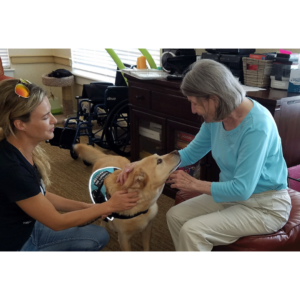A Fascinating New Trend in Senior Living: More Married Couples Are Moving in Together
 When The Seneca, an assisted living and memory care community in Rockville, Maryland, opened in July of 2021, staff quickly noticed a new trend. Senior couples were moving into the community at unanticipated rates.
When The Seneca, an assisted living and memory care community in Rockville, Maryland, opened in July of 2021, staff quickly noticed a new trend. Senior couples were moving into the community at unanticipated rates.
While it was previously more common for one member of a couple who needed extra assistance to move into an assisted living or memory care community alone, this pivot to couples moving in together marked an increasing trend that we’re likely to see continue. Recognizing the demand, The Seneca made some significant changes to ensure they could accommodate these couples.
A New Approach to Senior Living and Care
Jon Garber, executive director of The Seneca, explains that the community takes a distinctive, unique approach. “We’re definitely an assisted living and memory care community unlike any other, in terms of how we’re built in the beauty of the space, but also how we’re driven by the model of individuality and choice,” he says. “We don’t have mealtimes, and it’s not like your traditional assisted living where everyone eats breakfast at eight and lunch at noon. There’s all-day dining, restaurant-style, with multiple venues. We’re more like a resort community.”
In addition to the unique care model, The Seneca also offers living arrangements for couples that aren’t always found in assisted living facilities. Garber explains that the community features studios and large one-bedrooms, as well as two-bedroom, two-bathroom units. “We offer an active lifestyle that includes family-oriented all-day programming,” Garber says. “We’re really set up for couples.”
That appeal resulted in eight couples moving into The Seneca during a six-month period, which was more than anticipated. The Seneca continues to hear from couples who are interested in moving in together. This new trend prompted The Seneca to combine several of its one-bedroom units to create additional two-bedroom units to accommodate those couples.
The renovation involved creating an opening in a shared wall between two one-bedroom units. “Because our apartments have full-sized fridges, microwaves, and cabinets, we took one of the kitchens out,” explains Garber.
“We lowered the cabinets and made the space into a desk and work area. Each apartment has a full-size bed, and the bathrooms are very large with walk-in showers and built-in hand rails. There are two full baths and two full beds. If you have a situation where spouses aren’t able to sleep in the same room anymore, they each have a full bedroom.”
The Appeal of Couples Moving in Together
Garber notes that there are many advantages to couples moving into assisted living together. When one person in a couple needs more assistance than the other is able to provide, assisted living can offer a practical solution. “We have couples coming from their home or from independent living where one member is still relatively independent, but the other member is suffering from early dementia, physical limitations, or may need medication management,” he explains. “They can continue to live together, and we’ll do whatever it takes to help them thrive.”
Being able to live together may be the first step in helping these couples to thrive. According to Garber, situations where one spouse moves into assisted living and the other spouse remains home can cause stress. The couple may face anxiety over being apart, as well as the heartbreak that comes with that separation.
Garber predicts that this trend is one that we’ll continue to see in the coming years. The trend will be driven by the aging baby boomer population, as well as by the changing concept of assisted living communities. “One member can get the care they need, and the second can be active in the community during the day and know that their loved one is getting great care,” says Garber. “I think people are seeing assisted living as the next chapter.”
When couples live together, they have their emotional support system close, and can keep romance alive, too. “Studies have found when couples are together their health improves, or the advancement of an illness might slow down and possibly lower the risk of other illnesses,” explains Garber.
The Seneca also actively encourages family involvement. “It’s really important that we’ve been successful in ensuring families are part of the process,” Garber notes. “I regularly communicate with all families, we do a lot of family-centered events, and we were able to have families here for a Valentine’s Day dinner.”
Garber encourages senior care communities to listen to the needs of their families. If a couple wants to stay together, look for ways to accommodate that, whether designing the building with that in mind or creating larger units. “In some cases couples might not live in the same apartment, but they can still be in the same community,” he says. “Keep the idea of couples in mind as you’re building and programmatically designing.”

Paige Cerulli is a contributing writer to i Advance Senior Care.
Related Articles
Topics: Alzheimer's/Dementia , Facility management , Featured Articles , Resident Care











